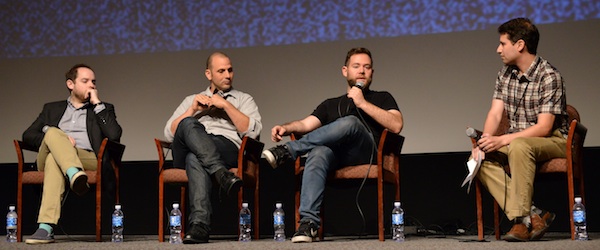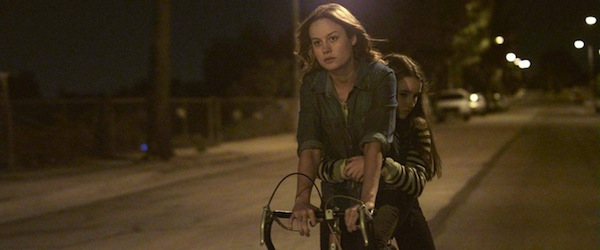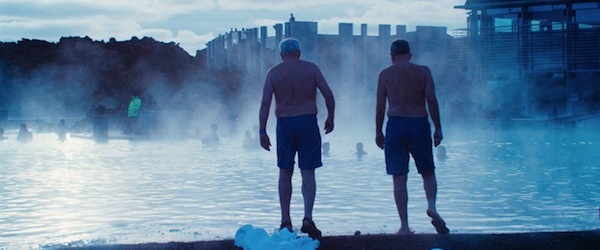Production Case Studies: How Short Term 12 and Land Ho! Came to Be

“Just make a movie.”
That was Short Term 12 producer Asher Goldstein’s advice for first-time filmmakers at the production case studies panel at the Film Independent Forum in October: Just make it, “not to make a ton of money—or make your money back, even—just making a movie, just to make it, to prove that you can.”
Goldstein, his producing partner Ron Najor and Land Ho! writer-director Aaron Katz were on the panel discussing their films’ paths to the big screen. Moderating the panel was Seth Caplan, producer of The Young Kieslowski, which premiered at the 2014 Los Angeles Film Festival, and Spirit Award winner In Search of a Midnight Kiss, which he discussed on this same panel at a past Forum. “I was in one of your guys’ seats a few years ago, and I was very, very honest,” he said. “It almost resulted in a lawsuit. So I’m hoping we can do that again today.”

Even after having won the Jury Prize at Sundance for the Short Term 12 short film and winning the Academy Nicholl Fellowship, Short Term 12 writer-director Destin Daniel Cretton and his team faced a rocky road getting the movie made. In the producing team’s efforts to get the film financed, Cretton kept getting the same feedback. “A lot of people were really loving the screenplay,” Goldstein said, “but were not enamored with the idea of putting money behind a first-time director.” So Cretton and his team made I Am Not a Hipster for $65,000, and voilà: he was no longer a first-time filmmaker.
Casting Brie Larson in the lead was the moment that got them greenlit. Najor wanted to cast John Gallagher, Jr., as Larson’s costar, and when he realized Larson and Gallagher were represented by the same agency, he reached out to the actor. “I think that’s a smart thing for young filmmakers,” he said. “If you do get an actor that’s interested in your project, it’s smart to look at who else that agency reps, because obviously, if they have a client in your movie, they probably would be excited to have other clients in your movie.”
Najor and Cretton both went to grad school at San Diego State University, where Najor has also taught, and the team arranged to screen an early cut of Short Term 12 to a class there for feedback. “It gave us a real sense, from a bunch of people who didn’t give a shit, more or less, about the movie, about what they thought,” Goldstein said. Najor emphasized the great value of test screenings: “you shouldn’t be afraid to get feedback,” he said. “You’re not trying to impress those people in that room, you’re trying to make a movie that’s going to play at a real festival.” Short Term 12 premiered at South by Southwest in 2013. Mission accomplished.
Full case study of Short Term 12 available here.

Katz co-directed Land Ho! with his friend from film school, Martha Stephens. Their basic premise was simple: what if Earl Lynn, a nonprofessional actor who Stephens had used in some of her films and a “larger-than life character,” as Katz described him, went to Iceland? Right away, they took two risks: co-directors and a completely non-famous star. They tested their concept by shooting two days in Kentucky, in a section that made it into the film. “We did it for a lot of reasons,” Katz explained. “One was to see what it would be like to work together as a directing team. The second reason was because Earl Lynn and Paul [Eenhoorn, his co-lead] had never met each other, and we wanted to see what they would actually be like together… Another function that it served was to show investors what this movie would be like.”
Katz and Stephens worked with Icelandic co-producers, who laid some groundwork for them before they came to Iceland and shot the film on a short schedule with a tiny crew. However, “because the film is from the perspective of two guys who have read one guidebook and are just visiting tourist destinations,” Katz said, “we didn’t need to know the country as intimately as we might for another project.” Their producer Christina Jennings, “a very confident driver,” did the stunt driving. Their art director Ólöf Rún, who surprised the crew with her incredible voice at karaoke one evening, sang the film’s theme song.
The film played at Sundance in 2014, and the whole team was nervous. “It doesn’t resemble a lot of contemporary films,” Katz admitted, “so we didn’t really know what our possibilities were.” They had a great sales agent at the Film Sales Company, though, and the film’s reception at the festival was very positive. Katz was getting constant calls from his sales agent; the deal happened around 4 a.m. “It was an incredible experience,” he said, “and maybe one of the most exciting things that’s happened, as a filmmaker, to feel like this thing that we were so proud of is actually maybe going to connect with people.”
Mary Sollosi / Film Independent Blogger